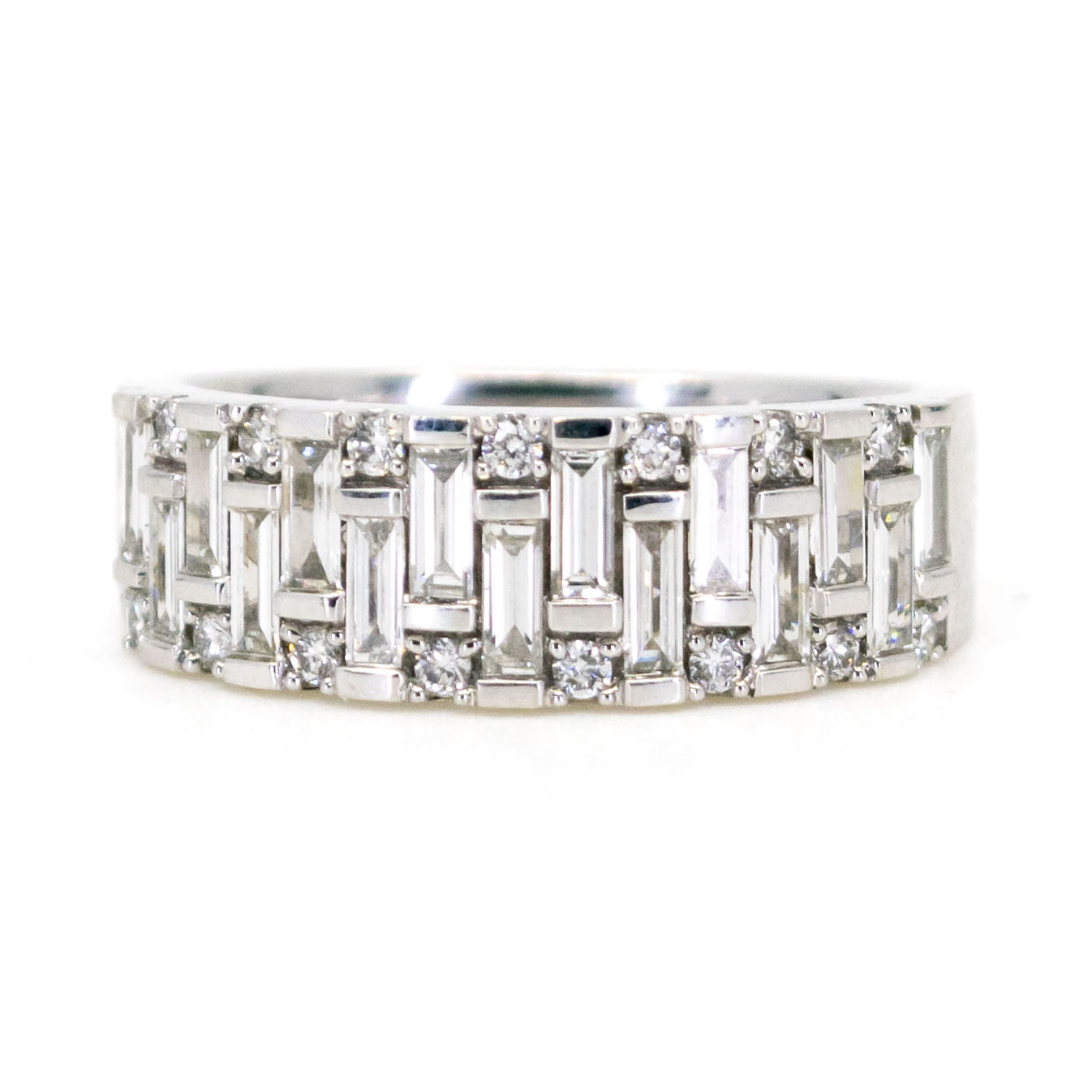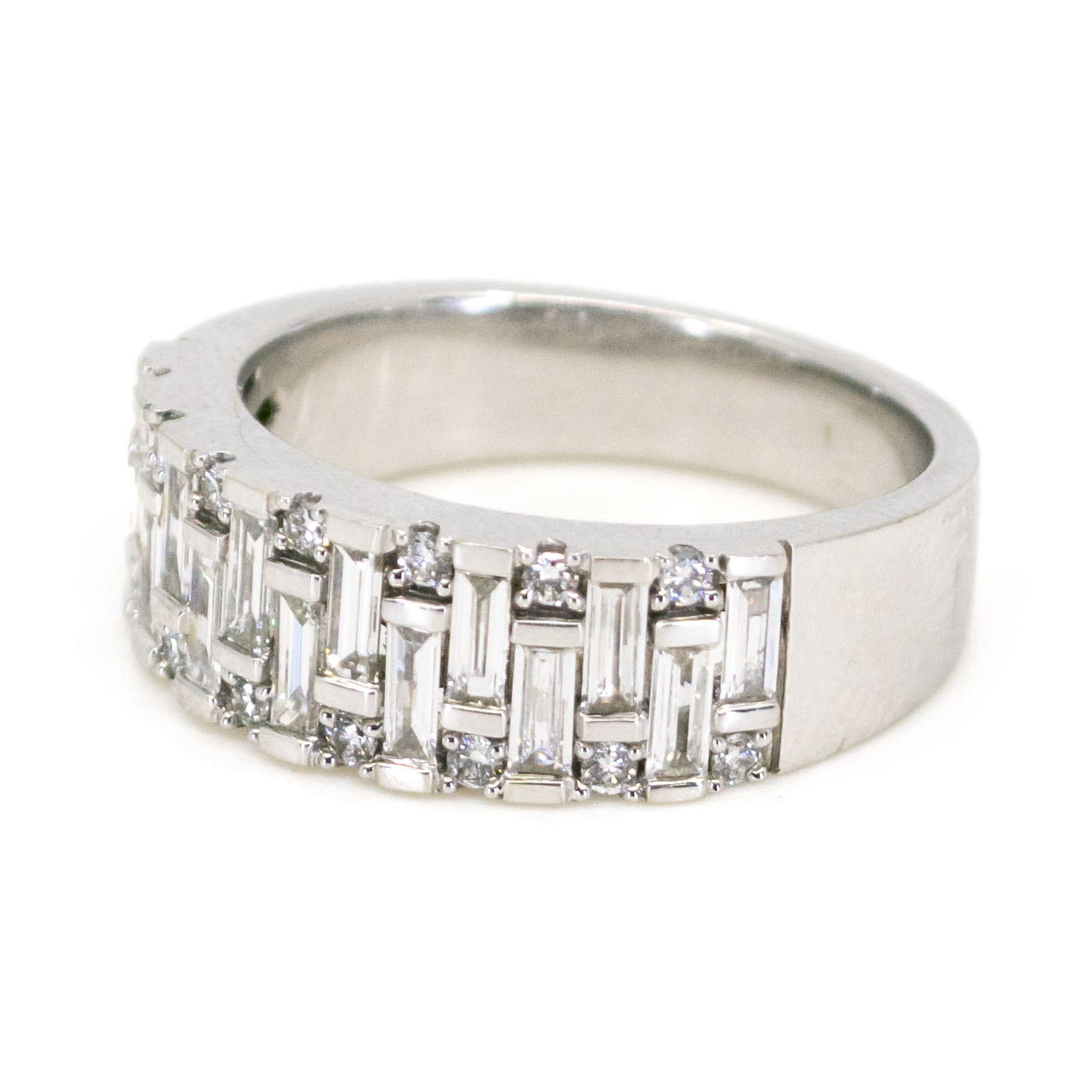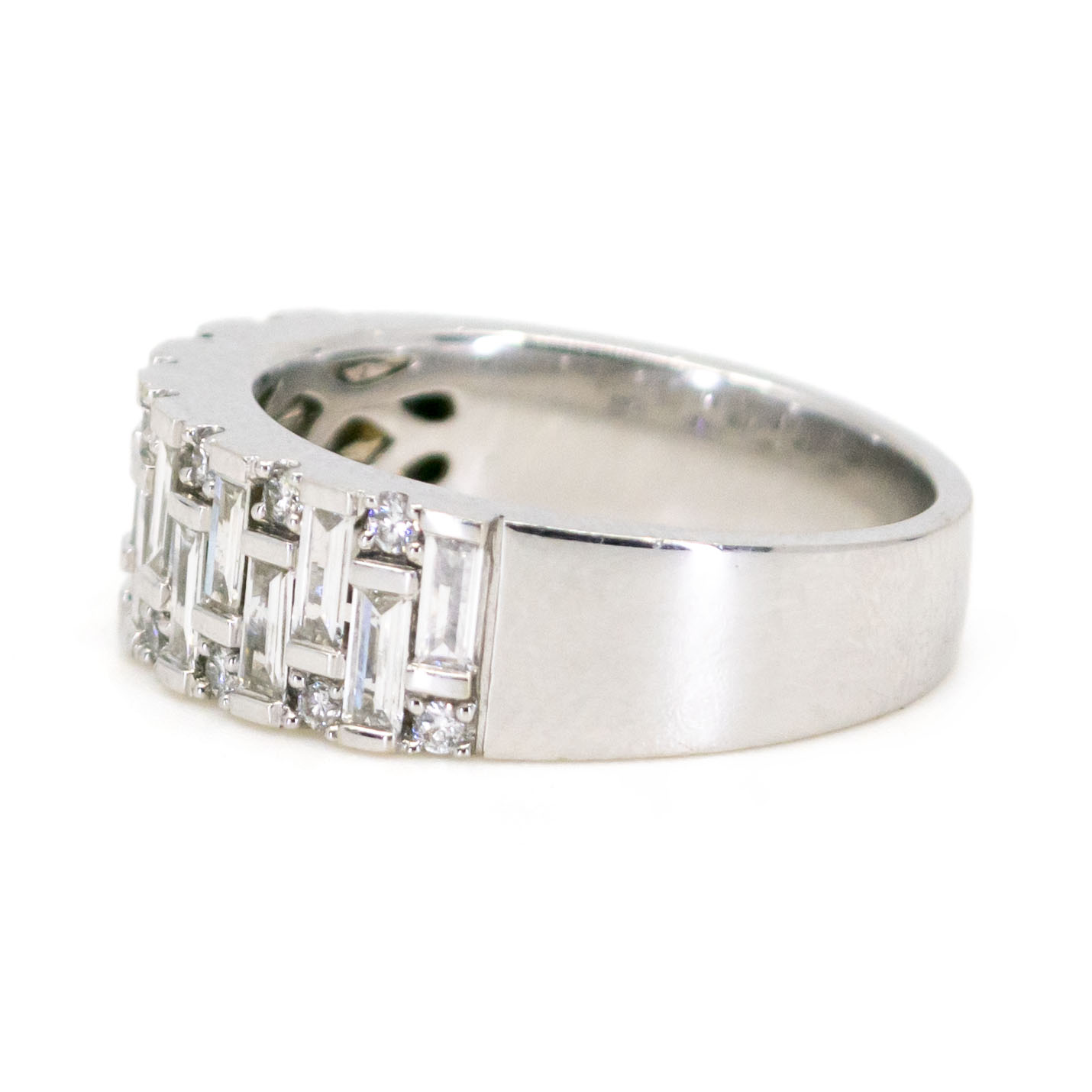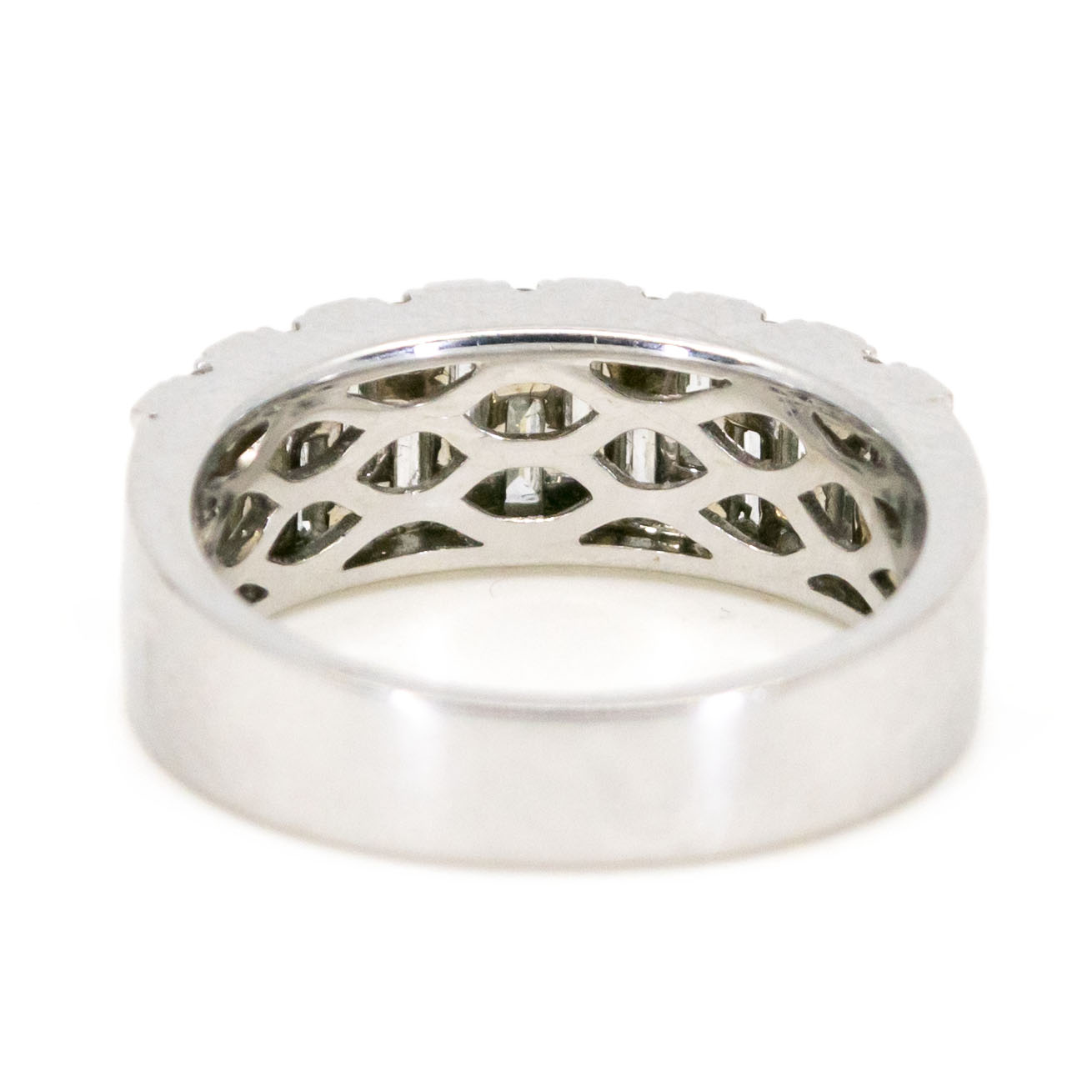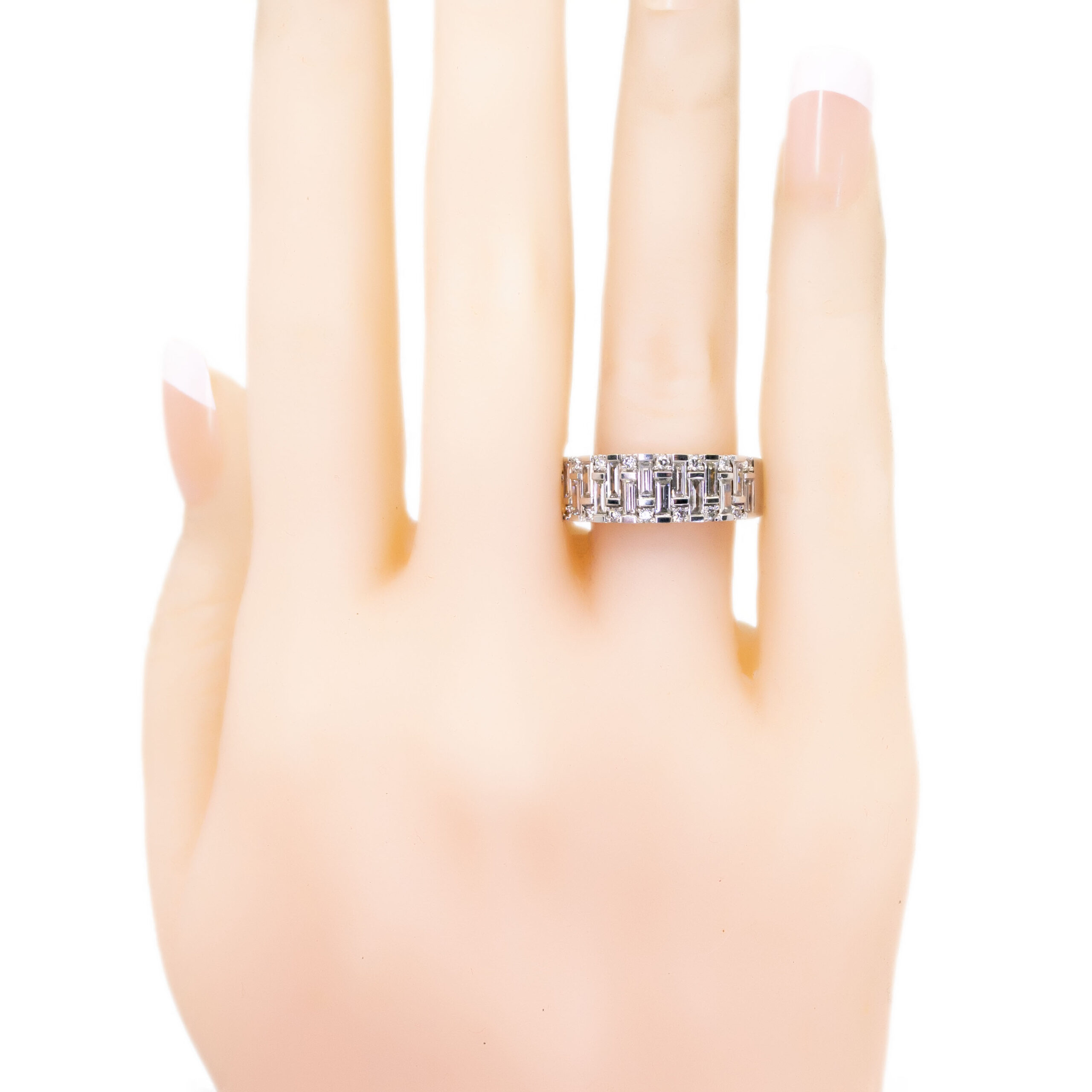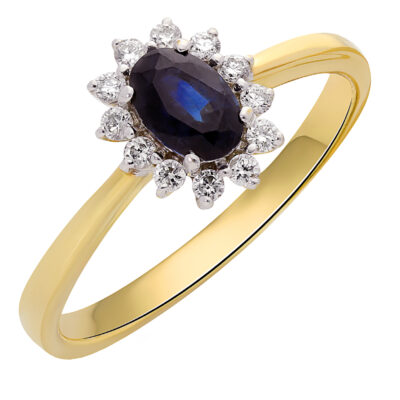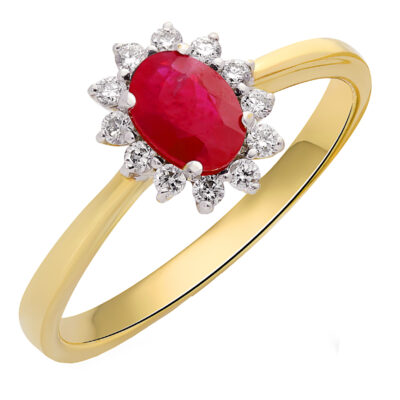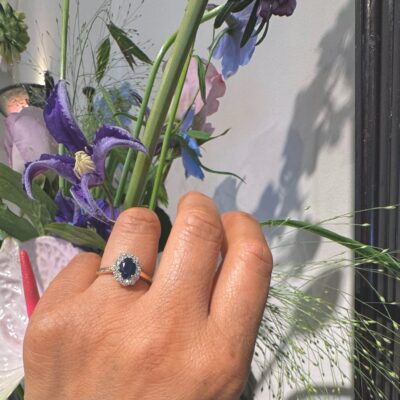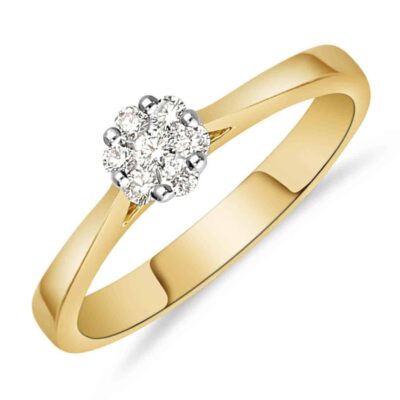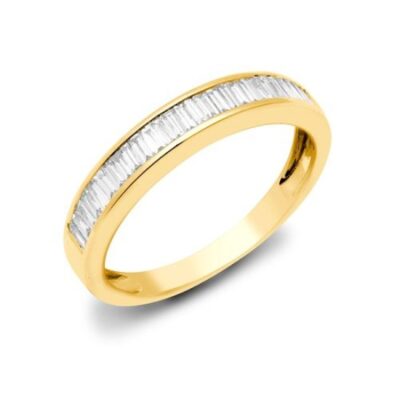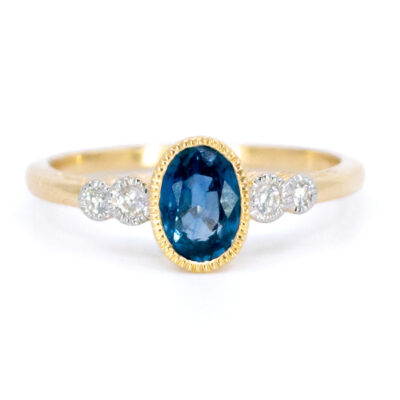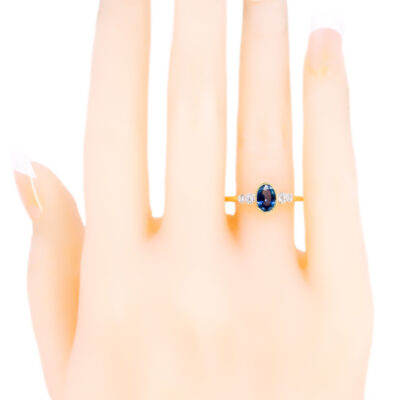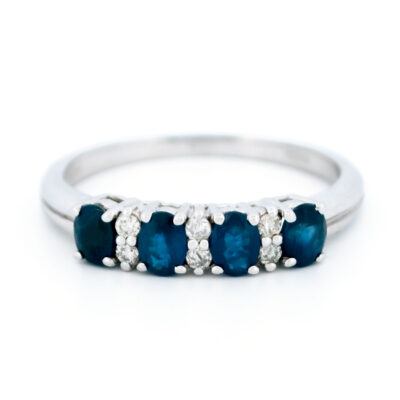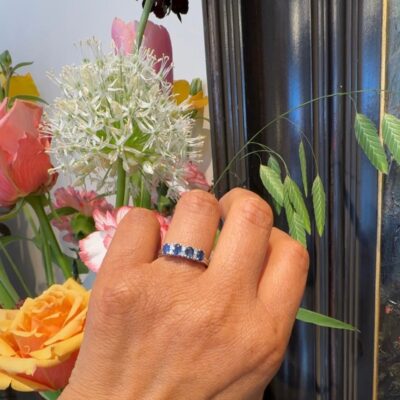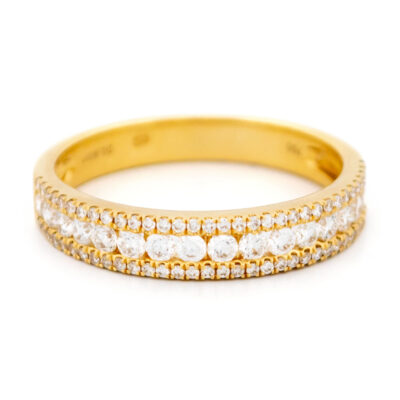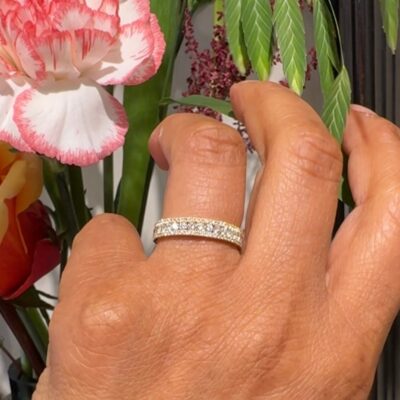This ❤️ lovely contemporary ring 💍 features a stunning design of round and baguette-cut diamonds. It boasts approximately 💎 1.00 carats of baguette-cut diamonds with H color and VSI1 clarity, decorated with approximately 💎 0.30 carats of brilliant cut diamonds with H color and SI1 clarity, all set in 18 karat white gold. 🙌
Videos
Details: ±1,00ct. (H VSI1) Baguette-cut diamonds, ±0,30ct (H SI1) Brilliant-cut diamonds, 18k Ring.
Design Era: Contemporary.
Size: 17.32 NL / 54.4 FR / 7 US / N½ UK, not sizeable.
Dimensions: H 0.3 x L 2 x W 0.7 cm.
Weight in grams: 7,4.
Condition: New.
Shipping and Pickup: This beautiful piece ships from our store located in the center of Amsterdam, The Netherlands. We offer both registered shipping and local pickup at our store. In the case of local pickup, any applicable shipping costs will be refunded.
About Us: Add some sparkle to your style with Binenbaum.com. We offer a stunning selection of antique and vintage jewelry that you won’t find anywhere else. From timeless rings and dazzling necklaces to unique brooches, we have something for every taste and occasion. Visit our website today and treat yourself to a piece of history.
| Design Era | |
|---|---|
| Design & Historical Context | Contemporary jewellery is a type of jewellery that reflects current trends and styles, and is often made from a variety of materials beyond the traditional precious metals and stones. This allows contemporary jewellery to have a more modern and unique appearance compared to classic jewellery. To create contemporary jewellery, it is necessary to have both specialized training and a deep understanding of the subject. The contemporary style combines historical techniques and artistic expression with innovative ideas and materials, giving it a distinct personality that falls between fashionable mass-produced jewellery and traditional artisanal works of art. |
| Key Materials | |
| Materials & Craftsmanship | Baguette-cut diamond: The Gem of Sleek Elegance and Sophistication The baguette-cut diamond is a timeless and sophisticated choice in the world of fine jewelry, known for its sleek, elongated shape and understated brilliance. Named after the French word for "stick" or "rod," the baguette cut features a rectangular form with step-cut facets that create a clean, elegant look. Historically, the baguette cut rose to popularity during the Art Deco period of the 1920s and 1930s, a time when geometric shapes and linear designs were all the rage. This cut was often used in combination with other shapes, such as round or emerald-cut diamonds, to create intricate and symmetrical designs that defined the era. The baguette cut's straight lines and minimalist appeal made it a perfect fit for the modernist trends of the time. In modern jewelry, baguette-cut diamonds are prized for their versatility and sleek appearance. They are commonly used as accent stones in engagement rings, flanking a larger center stone to add extra sparkle and balance. Baguette diamonds are also popular in eternity bands, bracelets, and earrings, where their clean lines and subtle brilliance create a refined, sophisticated look. Unlike brilliant-cut diamonds, which are designed to maximize sparkle, baguette-cut diamonds have fewer facets and a more subdued brilliance, focusing instead on clarity and the stone's natural beauty. This makes them an excellent choice for those who appreciate a more subtle, yet elegant, aesthetic. A baguette-cut diamond is more than just a gemstone; it is a symbol of refined taste and timeless style. Its sleek, geometric form and historical significance make it a perfect choice for jewelry that embodies both modern elegance and classic sophistication. Brilliant-cut diamond: The Pinnacle of Sparkle and Brilliance The brilliant-cut diamond is the most popular and widely recognized diamond cut in the world, renowned for its exceptional sparkle and fire. This cut, perfected over centuries, is designed to maximize the reflection of light, creating the dazzling brilliance that has made it the standard for diamonds in modern jewelry. The brilliant cut features 58 facets—33 on the crown and 25 on the pavilion—carefully arranged to capture and reflect light from every angle. The precision of these facets ensures that light entering the diamond is reflected internally and dispersed into a stunning array of colors, giving the stone its characteristic brilliance. Historically, the brilliant cut evolved from earlier cuts like the Old European and rose cuts, with advancements in diamond cutting technology and understanding of light reflection. This modern cut became widely adopted in the early 20th century and quickly became the preferred choice for engagement rings and other fine jewelry, due to its unmatched sparkle. In modern jewelry, brilliant-cut diamonds are prized for their versatility and unmatched brilliance. They are the go-to choice for engagement rings, earrings, pendants, and virtually any jewelry piece where a classic, sparkling diamond is desired. The round shape and symmetrical design make the brilliant cut ideal for showcasing the inherent beauty of the diamond, regardless of its size. A brilliant-cut diamond is more than just a gemstone; it is a symbol of timeless beauty and perfection. Its unparalleled sparkle and universal appeal make it the quintessential choice for jewelry that celebrates life's most precious moments. 18k: The Perfect Balance of Luxury and Durability 18k gold is a luxurious and highly sought-after material in the world of fine jewelry, known for its rich color, durability, and value. The "18k" refers to the purity of the gold, indicating that it is composed of 75% pure gold and 25% alloyed metals, such as copper, silver, or palladium. This combination provides the perfect balance between the softness of pure gold and the strength needed for creating durable jewelry. Historically, gold has been prized for its beauty and rarity, symbolizing wealth, power, and status across various cultures and civilizations. 18k gold has been a preferred choice in fine jewelry for centuries due to its ideal blend of purity and strength, offering a radiant gold color that is more vibrant than lower karat golds while still being hard enough for everyday wear. In modern jewelry, 18k gold is favored for its versatility and its ability to enhance the appearance of gemstones. It is available in several colors, including yellow, white, and rose gold, depending on the metals used in the alloy. Each color has its unique appeal: Yellow Gold: The classic choice, offering a warm, rich hue that pairs beautifully with a wide range of gemstones and complements all skin tones. White Gold: A sleek, modern option that resembles platinum or silver but with the strength and luxury of gold. It is often rhodium-plated to enhance its reflective surface. Rose Gold: A romantic, pinkish hue that has gained popularity for its vintage charm and contemporary appeal, achieved by alloying gold with copper. 18k gold is commonly used in engagement rings, wedding bands, earrings, necklaces, and bracelets, where its balance of durability and beauty makes it ideal for both intricate designs and simple, elegant pieces. The alloy's added strength ensures that jewelry can withstand daily wear while maintaining its luster and shape. 18k gold is more than just a material; it is a symbol of refined taste and enduring value. Its perfect blend of luxury and practicality makes 18k gold a timeless choice for those who seek the beauty of high-purity gold without sacrificing durability. Whether in classic or modern designs, 18k gold jewelry offers a radiant and lasting expression of elegance and sophistication. |
| Size | |
| Dimensions | H 0.3 x L 2 x W 0.7 cm |
| Gender | |
| Weight (in grams) | 7,4 |
| Condition |
By following these tips, you can enjoy your precious jewelry for many years to come.
Related Products
-
Diamond Sapphire 14k Cluster Ring 18368-9490
€ 1.695,00 VAT incl. (where applicable) -
Diamond Ruby 14k Cluster Ring 18369-9491
€ 1.695,00 VAT incl. (where applicable) -
Diamond Sapphire 14k Cluster Ring 17965-9362
€ 1.995,00 VAT incl. (where applicable) -
Diamond 14k Cluster Ring 17966-9363
€ 1.695,00 VAT incl. (where applicable) -
Diamond 18k Row Ring 17558-9244
€ 4.495,00 VAT incl. (where applicable) -
Diamond Sapphire 14k Oval-Shape Ring 17550-9240
€ 1.795,00 VAT incl. (where applicable) -
Diamond Sapphire 14k Row Ring 17515-9263
€ 1.995,00 VAT incl. (where applicable) -
Diamond 18k Triple-Row Ring 17311-9167
€ 2.695,00 VAT incl. (where applicable)
- Home
- Collection
- Fine Jewelry
- Silver Jewelry
- Silverware
- Boxes
- Candlesticks
- Salt and pepper shakers
- Miniatures
- Salt cellars
- Spoon Set
- Condiments
- Frames
- Napkin Ring
- Spoon
- Oddities
- Cups
- Vases
- Cutlery
- Serving Spoon And Cake Server
- Candlesticks
- Baskets
- Hanukkiah
- Spice Tower
- Yad
- Tea Set
- Sugar Castor
- Napkin Rings
- Wine Bottle Coaster
- Wine Stopper
- Tea Pot
- Jugs
- Rattles
- Hip Flask
- Miscellaneous
- Rings 💍
- About
- Contact
